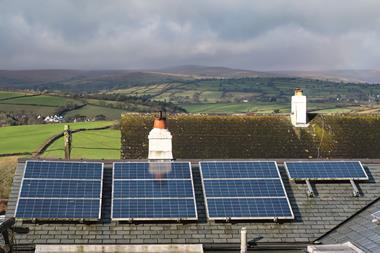As cities densify and the demand for goods and people to be moved in greater quantities and at greater speed grows, improving mobility becomes increasingly important.

Logistics companies, mobility platforms and vehicle manufacturers are competing to lead the way, investing some $80bn globally in Connected Autonomous Vehicles (CAVs). Of course, investment does not necessarily translate into impact, at least not straight away.
The result is a technological development that is as great in uncertainty as it is in impact. This poses a challenge for commercial real estate – a sector not renowned for early adoption, yet often driven by long-term investments.
With this in mind, we recently looked into the likely impact of CAVs on four aspects of commercial real estate: the central business district, retail, parking, and logistics.

With the potential benefits for people – greater choice, less congestion, and more efficient journeys – also benefitting places, here are three key things real estate professionals should keep in mind:
- It’s not just about the innovators.
The auto-tech sector grabs the attention of even the most sceptical – perhaps because it combines the familiar act of driving with the dizzying possibilities of new technologies. Watching where the major players put their money is a helpful indicator of understanding how deployment may take shape. Currently, my money would be on fleets of CAVs operating within fixed areas thanks to geofencing technology, operating on a subscription or PAYG model.
However, the likelihood of a single model of autonomous vehicle use emerging across multiple environments at the same time is small. And when it comes to making a major impact on the built environment, the level of use will need to be big. Regulation, not just investment, will determine which models reach market penetration, where they do so, and when. William Gibson was right – the future is here (Arizona, mainly), it’s just not evenly distributed.
- Stop obsessing about the final outcome, focus on the transition.
Thanks to cartoons, sci-fi, and architectural renderings, it’s easier to think about an entirely AV city than it is one with mixed road use. This makes it difficult for landlords to know how they should adapt buildings, and at what stage to start doing so. Planning for flexibility and adaptability is key to avoiding obsolescence – whether this be designing carparks with adaptation into other uses in mind, or focusing on providing options for mobility solutions, such as bicycle storage and designated pick-up points for ridesharing vehicles.
- Look beyond autonomous vehicles to how the world of mobility is changing.
Rather than seeing CAVs as the end point in urban mobility, the subject should be a starting point for thinking more creatively about the types of places people want to work in, and how they want to get there. The demographic, political, environmental, and technological factors influencing interest in the technology are not limited to the question of who – or indeed what – is turning the steering wheel. Several cities are adopting Mobility as a Service (Maas), with an emphasis on choice, user experience, and the ability to pay for and plan journeys on a single online platform. End-user behaviours and expectations with regards to mobility, environmental quality, and data are changing. The question for the CRE sector will be whether to wait for a critical usage mass to impact the built environment, or to use the built environment to shape our movement and engagement within our surroundings.
































No comments yet